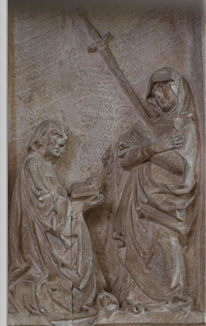 |
Beyond the Norms: Religious Practice in Late Medieval and Early Modern Transylvania
Research project financed by a grant of UEFISCDI
Project number PN-II-ID-PCE-2011-3-0359
Contract number: 225/2011 |
The ultimate goal of this research is to explore the construction of religious/confessional identity in the late medieval and early modern period with a focus on lay involvement in this process. The project will assess changes in religious practice shaped by secular agency in response to the norms set up by the church/churches. However, by taking a closer look at the changes in ecclesiastical prescriptions, both during the late Middle Ages and after the Reformation, this investigation will also consider the possibility of secular impact on the development of church norms. The project will consequently emphasize the role of the two-way communication between the clergy and secular society. It will address such issues as the place of religion in society, the strength of habit in religious practice and the power of allegiance to a confessional community.
Interdisciplinary in its approach, this project will focus on, discuss and refine a number of controversial concepts in current scholarly debate, such as popular religion and superstition, acculturation and confessionalization, piety and confessional identity, religious norm and religious practice. They are the dominant concepts in any recent discussion of religious experience on the threshold of modernity.
The project is consequently centered on a number of research questions, which it aims to answer: Were the laity empty vessels to be filled through the efforts of the church? Or were they active participants in the shaping of their religious experiences? These questions bring to the fore issues concerning lay reaction, and even secular initiative in religious practice, the integration by the laity of the norms designed by the clergy, secular needs and expectations. Were reformed clergy successful in shaping the correct beliefs and proper conduct of the laity? Or were they defeated by the strength of habit in devotional practice and by residual beliefs in the protective powers of intercessors? This raises the issue of change and the possible continuities between religious practice during the late Middle Ages and the Reformation. It also forces ongoing scholarship to grapple with the concepts of superstition and popular religion as they have been defined and constantly refined by historians during the past few decades.
The idea of this research has also stemmed from the state of the art in local scholarship. The latter has mostly focused on case studies and has taken into account primarily normative sources. While older scholarship has shown an almost exclusive interest in the church as an institution, younger scholars have started to increasingly look at religious life, the relation between patronage and artistic production and religious/confessional identity. However, the specific focus of existing case studies and the dispersed nature of this research have led to fragmentary conclusions. This highlights the need for a broader assessment of the issues related to religious experience in the late medieval and early modern period. It also suggests the need to look beyond the norms at actual religious practices and the construction of confessional identity. Finally, it prompts scholars to focus on approach and methodology while exploring new lines of inquiry. In this way the specific investigation of well-delineated topics can be brought together to create new methodologies for researching the religious experience of the past.
|


